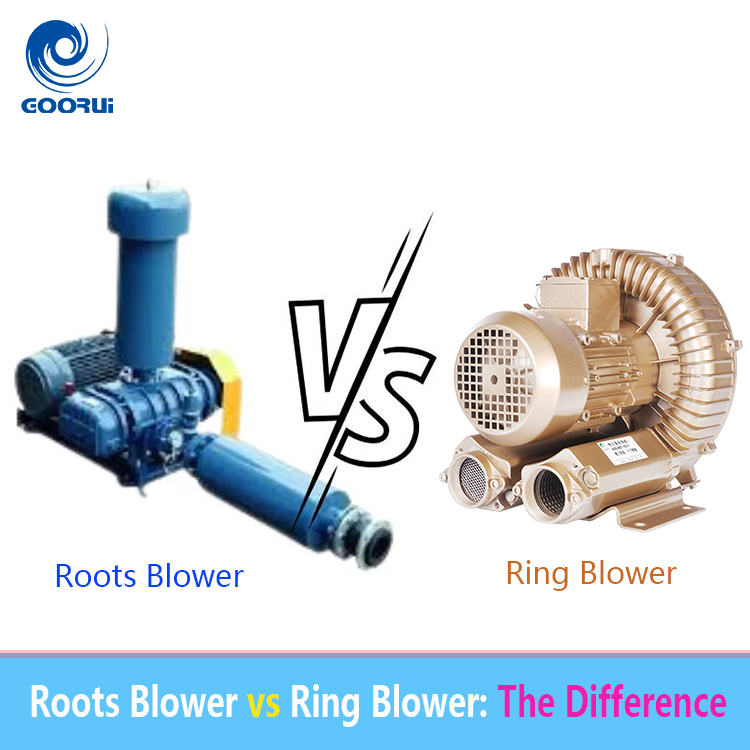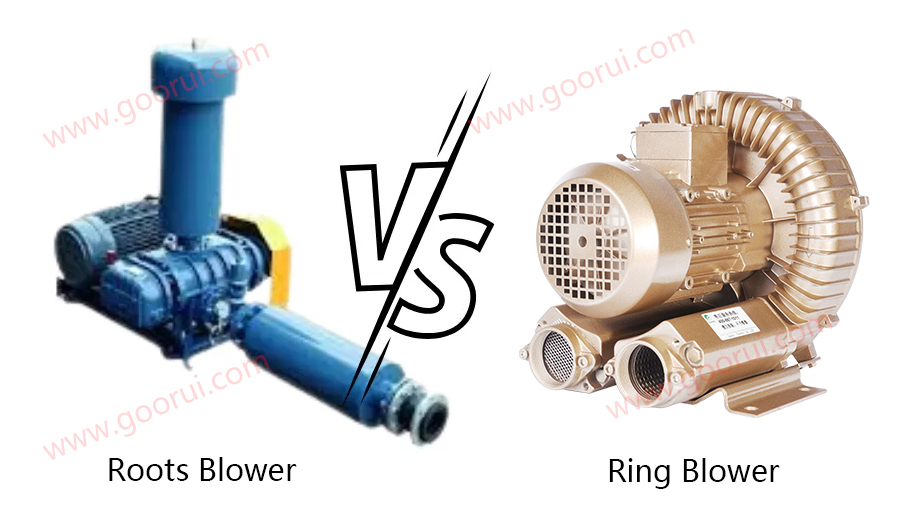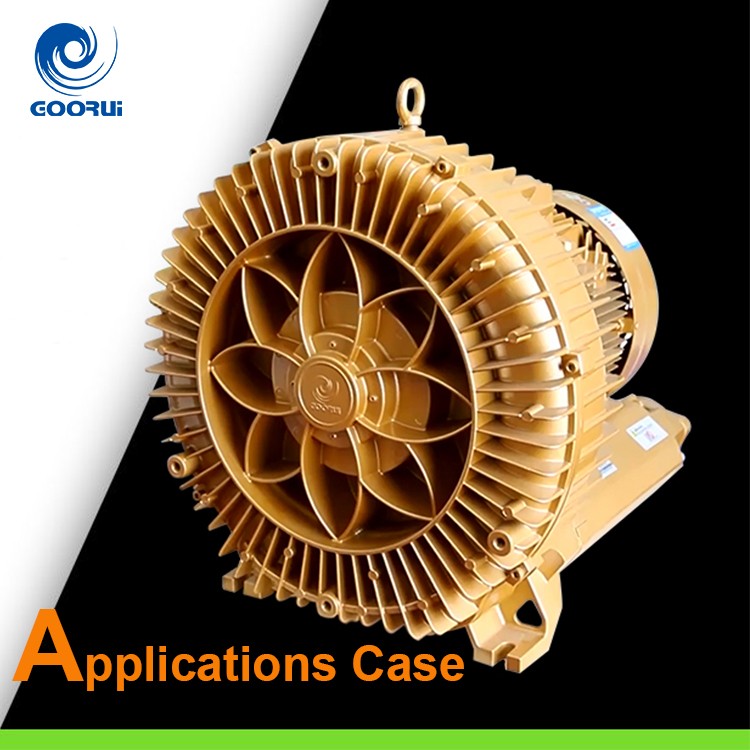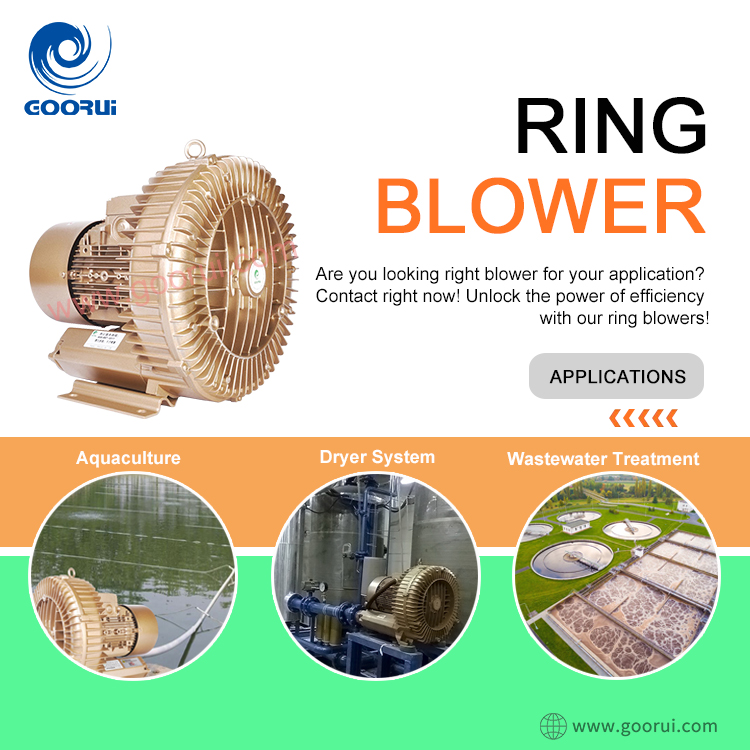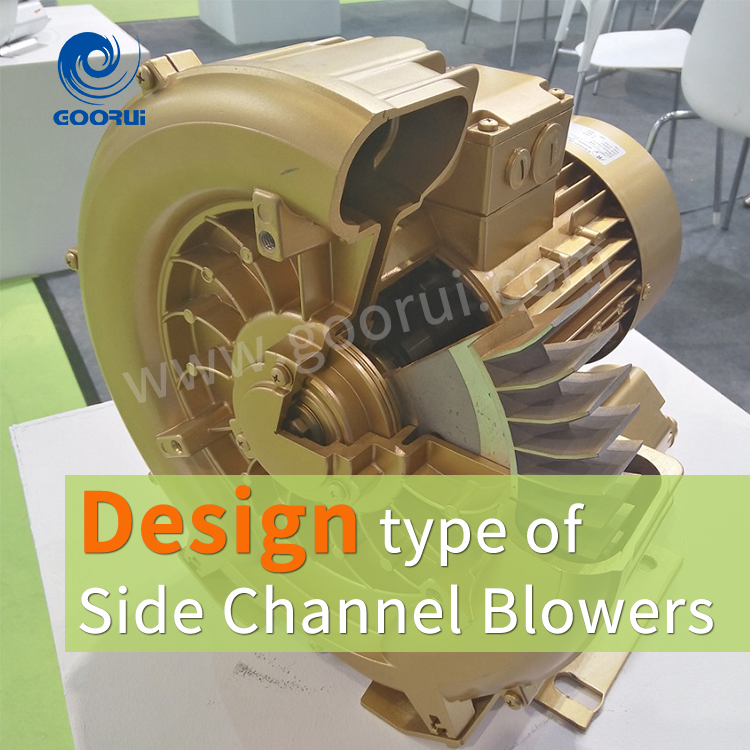Ring and roots blowers are two types of positive displacement blowers used for industrial and commercial applications. Both are similar in design and function but differ in efficiency, pressure capacity, and noise levels. Root blowers are larger and more powerful than ring blowers.
Roots Blower vs Ring Blower: Understanding the Differences
Roots blowers and ring blowers are designed differently. Roots blowers trap air or gas between two rotors that rotate in opposition to one another, producing a non-contact pumping mechanism. Air or gas is drawn into the blower, compressed, and then forced out the discharge port as the rotors revolve.
Ring blowers use a single impeller with numerous blades to compress air or gas, producing centrifugal force and forcing it out via the discharge port. High-speed rotation of the impeller in a spherical chamber is necessary for this.
Performance
Roots blowers have high volumetric efficiency and low-pressure functioning, making them ideal for applications requiring a high flow rate, such as wastewater treatment, pneumatic conveying, and ventilation.
Ring blowers provide a high-pressure output at a low flow rate and are suited for activities requiring greater pressure than roots blowers, such as Hoover cleaning, drying, and packing.
Advantages and Disadvantages:
Roots blowers provide a non-contact pumping mechanism, minimal maintenance requirements, and great volumetric efficiency. They are easy to install in confined locations due to their small form and quiet operation.
However, they lose efficiency at higher speeds and are not recommended for high-pressure applications.
Ring blowers provide a high-pressure output, low noise level, and a variety of working speeds. They are ideal for continuous operation but are less effective than roots blowers at low speeds and are susceptible to wear and tear due to their high impeller rotational speed.
Conclusion
Positive displacement blowers are used in industrial and commercial applications, such as ring and roots blowers.
Both types of blowers move air or gas, but their design, functionality, and intended use are different.
To choose the best blower for a specific application, it is important to understand the differences between roots and ring blowers. Factors such as flow rate, pressure, and efficiency should be taken into account when selecting a blower.


